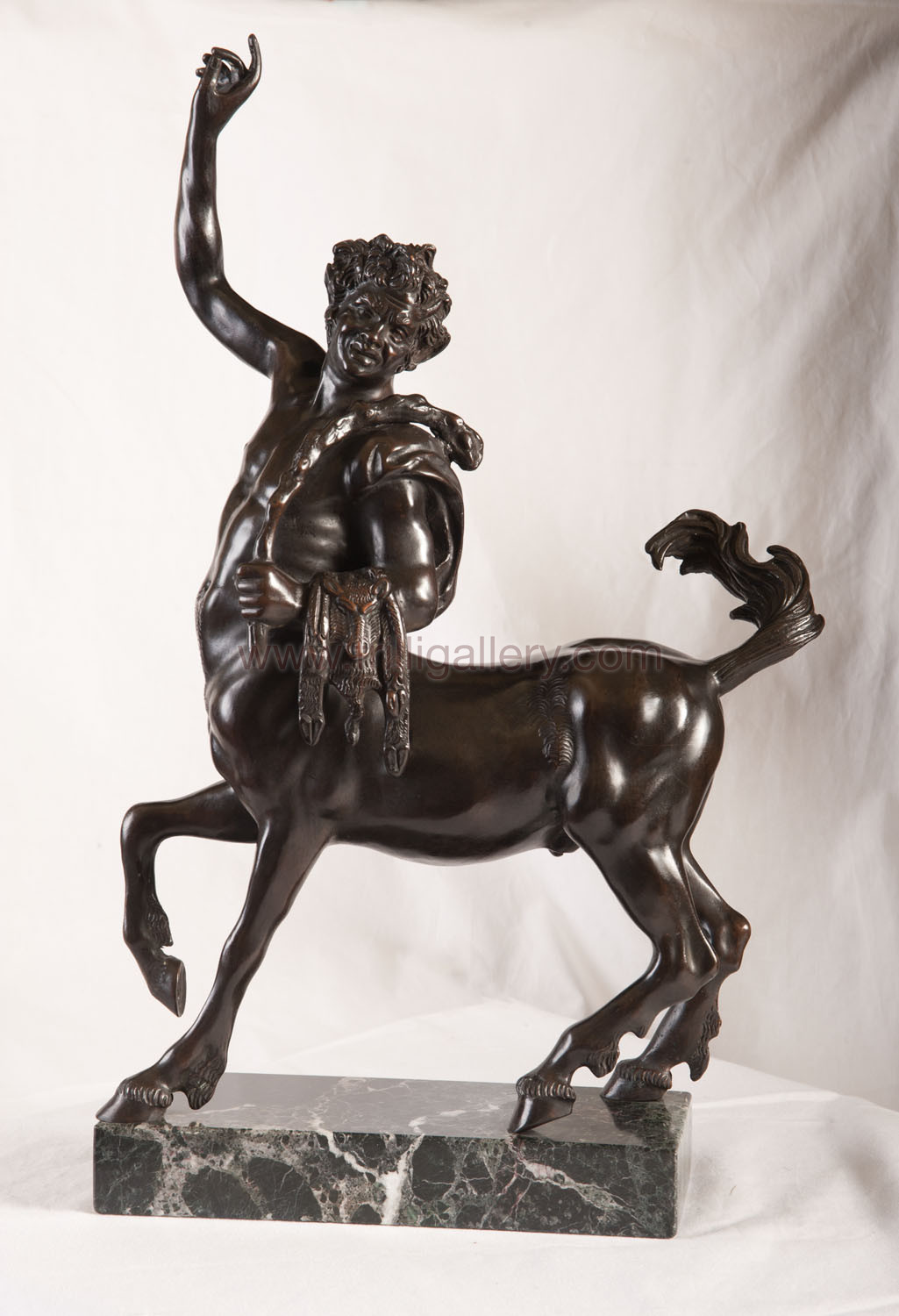


The original masterpiece is situated today in the Capitoline Museums, Rome. The statue was found in 1736 in the Villa of Emperor Hadrian in Tivoli and is stylistically assignable to the Hadrianic period (117-138 d.C.).
This sculpture is famous for being part of a couple of centaurs called Centrauri Furietti (named after the one who found them), also known as Centauro Giovane and Centauro Vecchio when they are treated separately. The sculptures are signed by Aristaes and Papias, artists from Aphrodisias, a city of Asia Minor, home to a school of skilled copyists of Greek operas. Anatomical details and differentiation of facial features make it possible to identify the age of these two Centaurs and their different feelings: the young man is cheerful and joyous, the old tired and suffering.
The Centaur, a being with the bust and the head of a man and the body and legs of an animal, is entirely naked, with the exception of a small wild animal skin resting on the left arm. In the same hand he holds the small gnarled stick typical of satyrs. The statue presents a sinuous rhythm determined by the accentuated twist of the bust, the position of the arms and the movement of the right front leg of the quadruped, raised from the ground and bent.
To request info for this item please use the following form